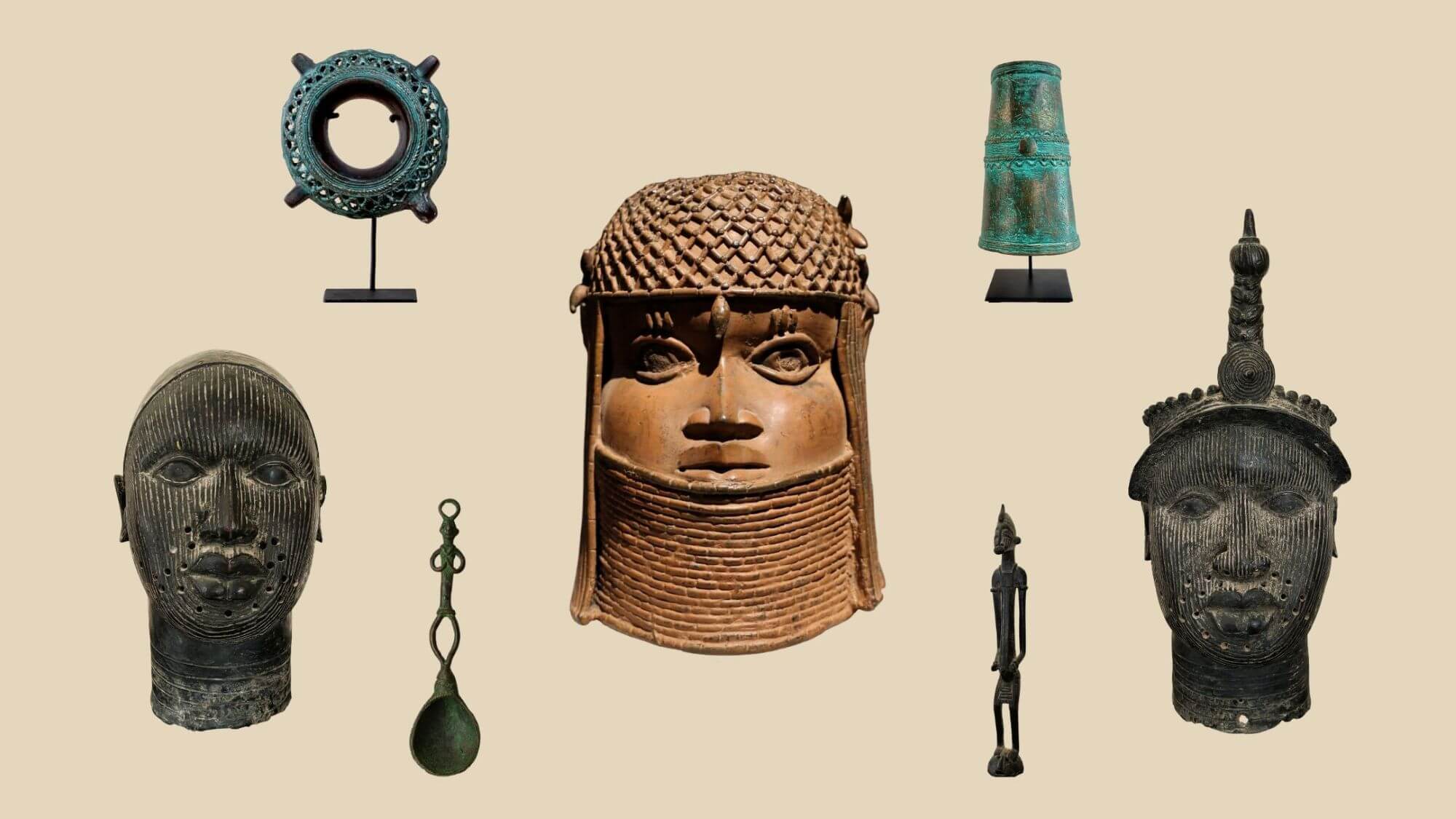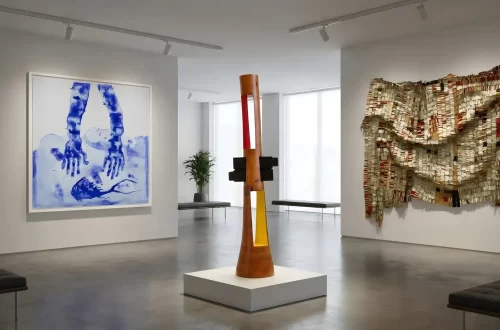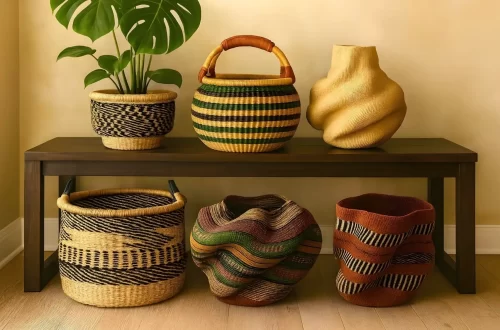African bronze art represents royal power, sacred rituals, and family legacy. Famously cast in the golden courts of the Benin Kingdom—located in present-day Nigeria—these pieces carry centuries of tradition. However, African bronze figures are far from being stuck in the past. These unique artworks bring a powerful aura to modern homes—wherever they are showcased.
In this guide, you’ll get a glimpse of their origins, tips to display them beautifully in your home, and a curated edit of pieces you can acquire. History and style in one? Yes, please.
Jump to:
- African Bronze Art: A Legacy Cast in Metal
- How to Style African Bronze Art in the Home
- 5 Powerful African Bronze Art Pieces to Shop
African Bronze Art: A Legacy Cast in Metal
Bronze art has long held a place of honor in African history. It rose to international fame through the Benin Bronzes—stunning cast works created in the royal court of the Benin Kingdom, in today’s southern Nigeria. These pieces were crafted for royal altars, rituals, and ceremonies, and included everything from commemorative heads to detailed plaques and animal figures.
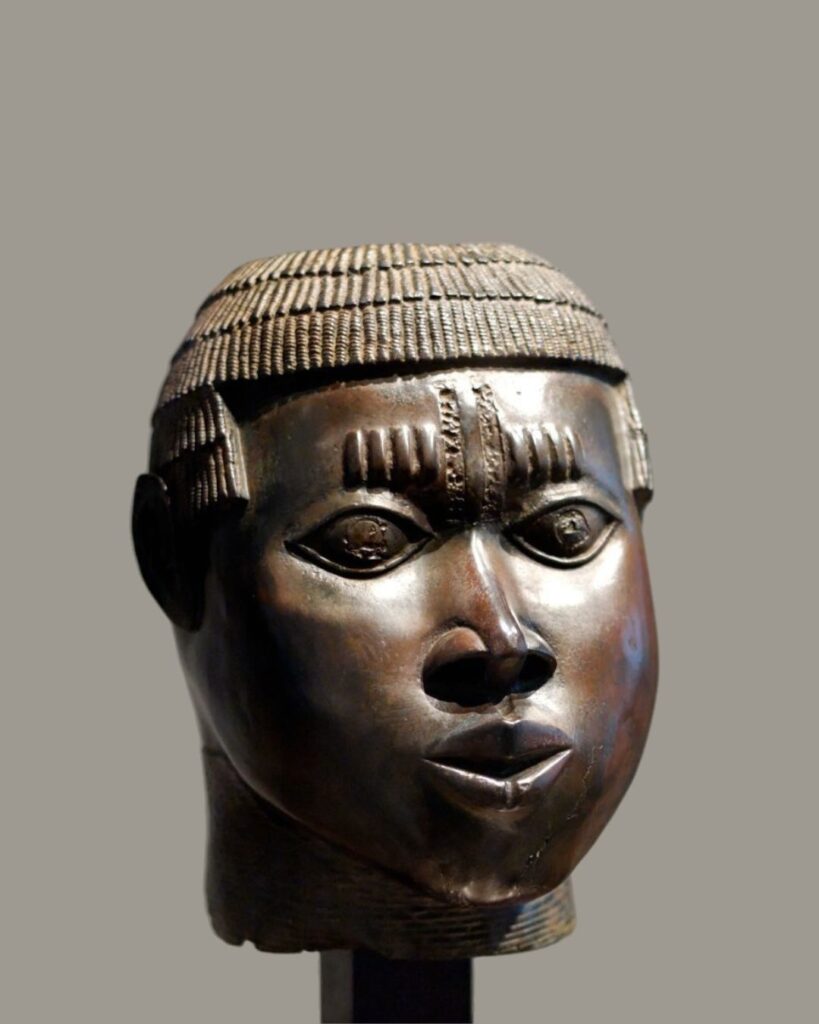
The Benin Bronzes were made by a specialist guild using brass and bronze, starting as early as the 12th century. Their work was so refined that two “golden ages” are said to have taken place—first under Oba Esigie in the 16th century, and later during Oba Eresoyen’s reign in the 1700s. The Oba, or king, would often commission a bronze head of his predecessor after their passing. Nearly 170 of these ancestral sculptures have survived, with some going back almost a thousand years.

Licensed under the Creative Commons Attribution 3.0 Unported license
The Benin Kingdom wasn’t the only center of this metal mastery. The Kingdom of Ife, in what is now southwestern Nigeria, produced remarkably lifelike bronze heads. Meanwhile, the Igbo-Ukwu region—located in southeastern Nigeria—revealed cast works that predate both kingdoms. Together, they show that African bronze art was part of a broader and deeply rooted tradition.

Today, the craft is still very much alive. While Benin and Nigeria remain key hubs, you’ll also find bronze artists working in Cameroon, Burkina Faso, and beyond. Some stay close to tradition, others push the form in new directions—but the connection to history remains strong.
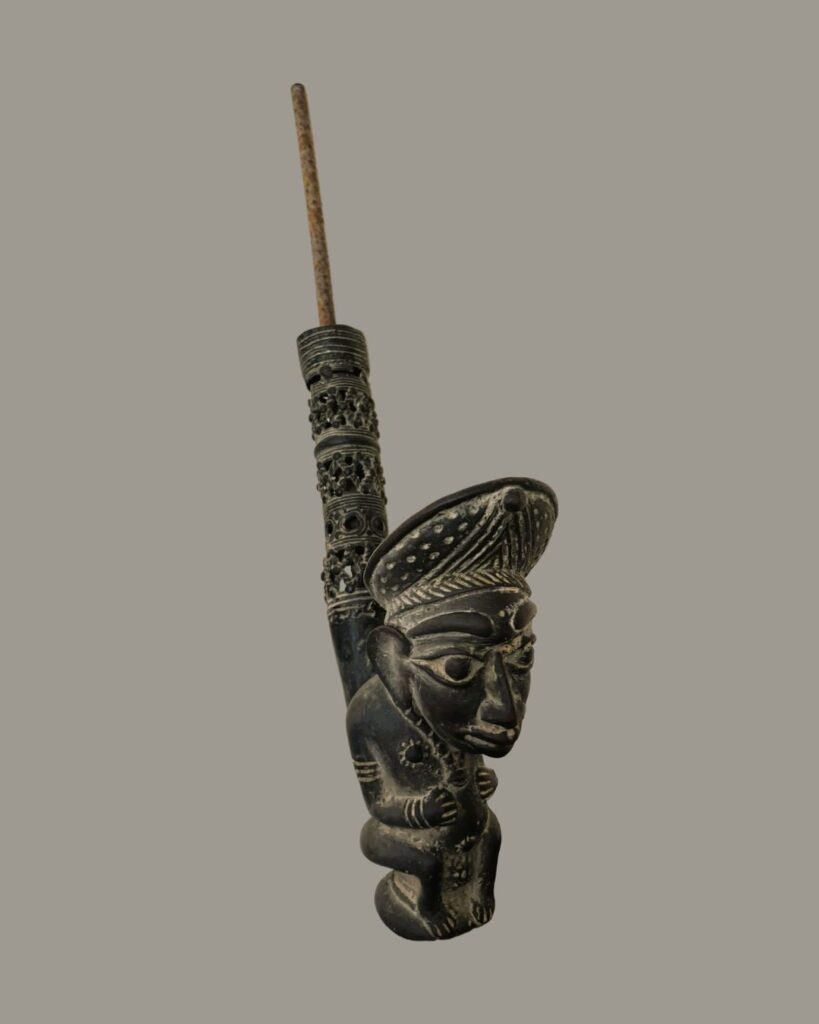
How to Style African Bronze Art in the Home
African bronze art isn’t something you just place somewhere. These pieces carry presence, historical weight, and soul. So when you bring one into your home, you must spotlight it the way it deserves.
Make a Bold First Impression with a Console Display
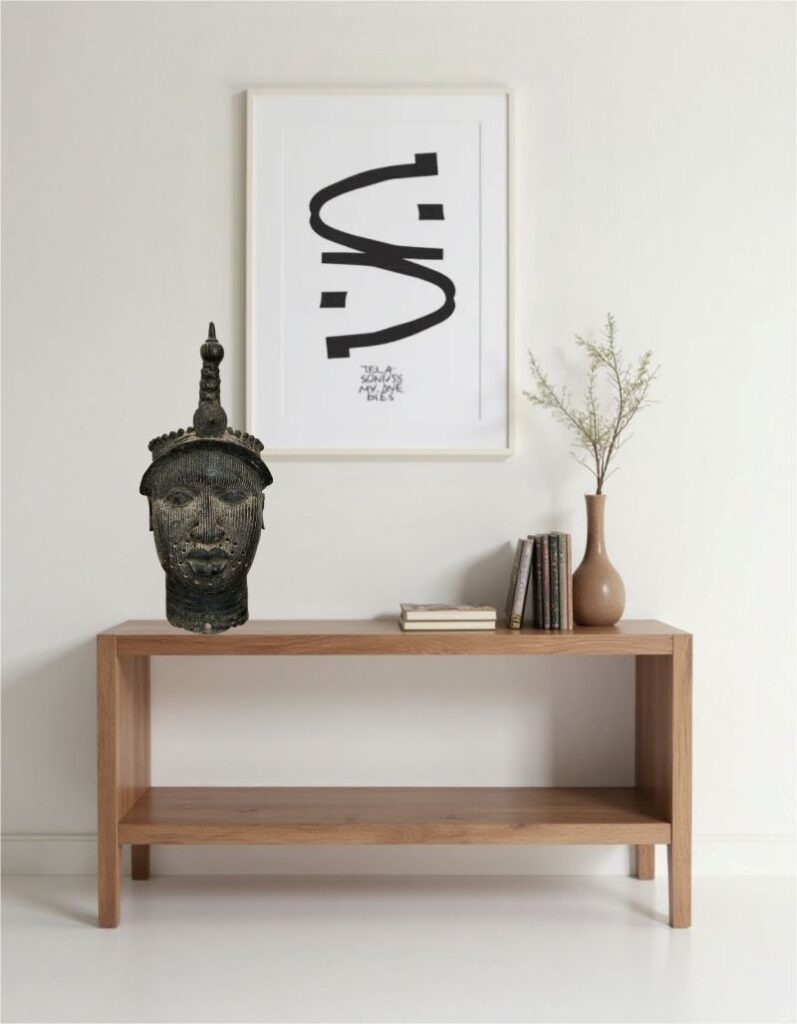
A bronze figure on a hallway console is a statement welcome. Choose a table with clean lines and let the sculpture take center stage. I like pairing it with nothing more than a vase or a quiet stack of books. It sets the tone instantly.
Anchor Your Seating with a Bronze Statement
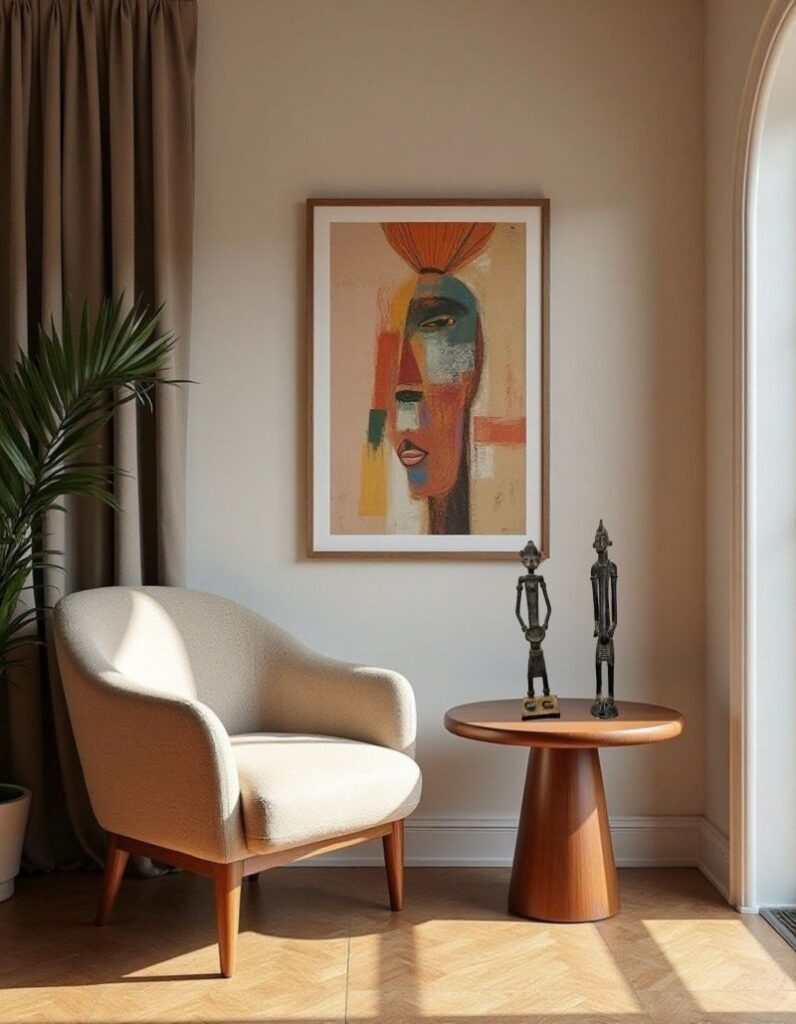
In the living room, a bronze piece on a side table can ground the entire space. Think of it as a visual pause—still and strong, cutting through the fluff. I’ve also seen a larger piece placed low, on a short plinth or even directly on the floor beside a lounge chair. It changes the energy of the room in the best way.
Create a Focal Point in Shelves and Nooks

If your space includes a built-in niche or alcove, treat it like a private gallery. One well-placed bronze work, softly lit, turns that quiet recess into something magnetic. As for shelving, go sparse. Let your bronze breathe by keeping the surrounding decor minimal.
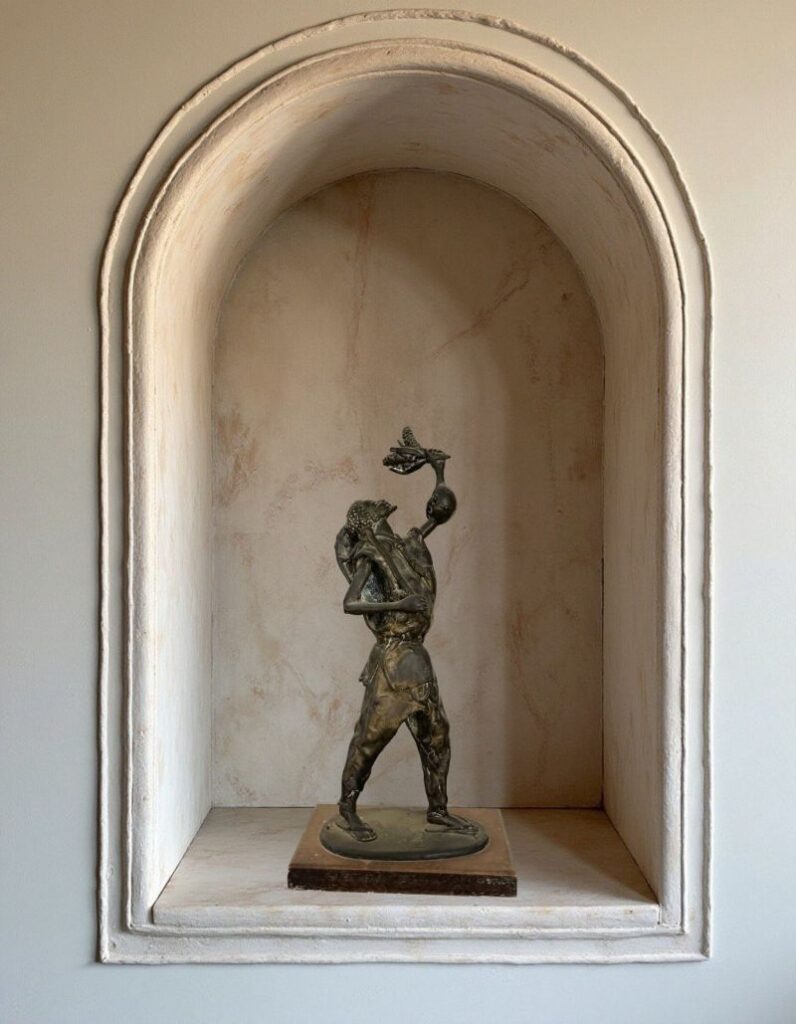
Wherever it goes, lighting is key. Skip the overhead glare. Use a directional spotlight or lamp to draw out the texture and patina. African bronze art has a way of catching light slowly—and it deserves that kind of attention.
5 Powerful African Bronze Art Pieces to Shop
Looking for something bold, storied, and full of presence? These bronze treasures don’t whisper—they speak. From royal courts to modern living rooms, these pieces bring history home in the most artful way.
These picks aren’t sponsored—just pieces we truly love. Prices are in USD and subject to change.
Yoruba Bronze Head
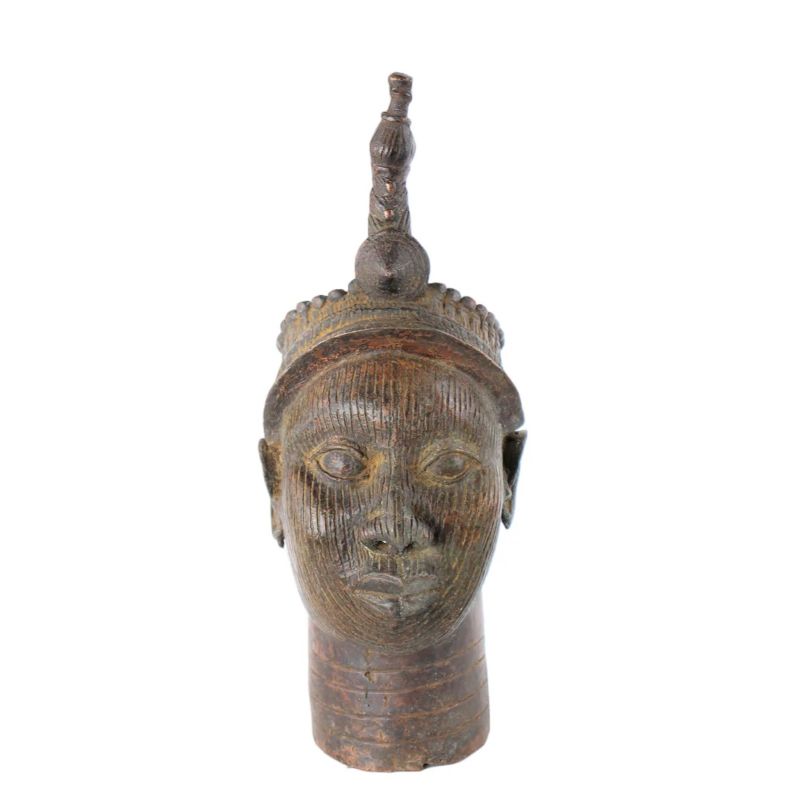
African Angel Art, $795
Cast in the 12th or 13th century using lost-wax techniques, Ife bronze heads like this were born in what is now Osun State, Nigeria. The Yoruba saw the head as the seat of inner power (Ase), so it’s no surprise these sculptures feel weighty, both in form and in meaning. Place it where it can rule the room.
Large Bronze Cuff

SARZA, $160
Once gifted to brides in the Benin Kingdom, these richly detailed bangles were symbols of wealth and status. Now? They’re conversation starters. Each one carries a gorgeous green patina and no two are quite alike. Let it steal the show.
Striking Bronze Spoon
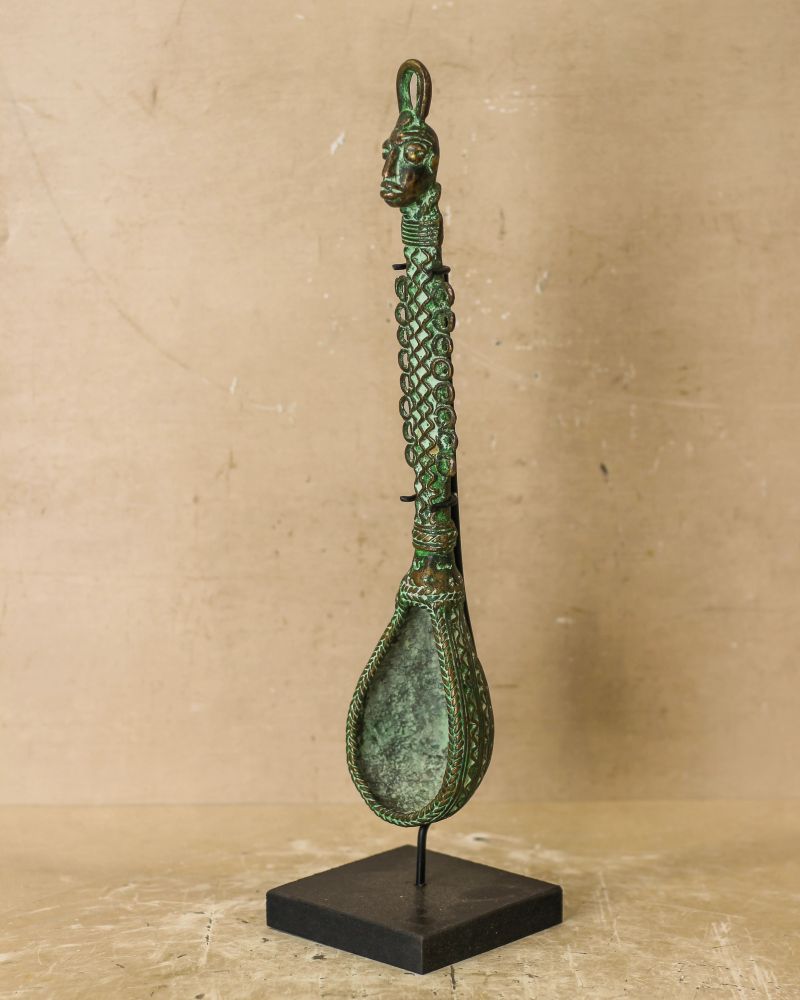
Botanical Boys, $223.30
Yes, it’s a spoon—but not the kind that lives in a drawer. Handcast using traditional Benin methods, this sculptural piece has texture, history, and soul. I love it propped on a ledge or nested into a styled shelf. It’s small but mighty, like a whisper of the past made modern.
African Bronze Bangle
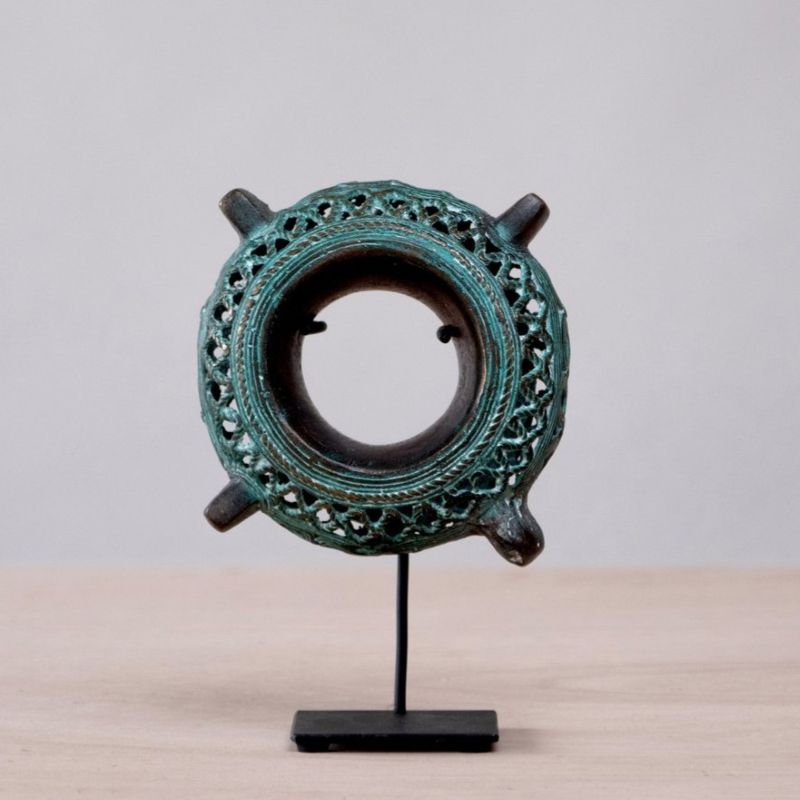
The Wanderlane, $275
These cuffs were once used as currency, bridal dowries, and status markers across West Africa—particularly in Nigeria. The lost-wax detail is stunning, and the aged brass finish gives just the right edge. Tuck one onto a coffee table book stack or mount it in a shadow box—it’s wearable history, turned decor.
Bamoun Bronze Stool
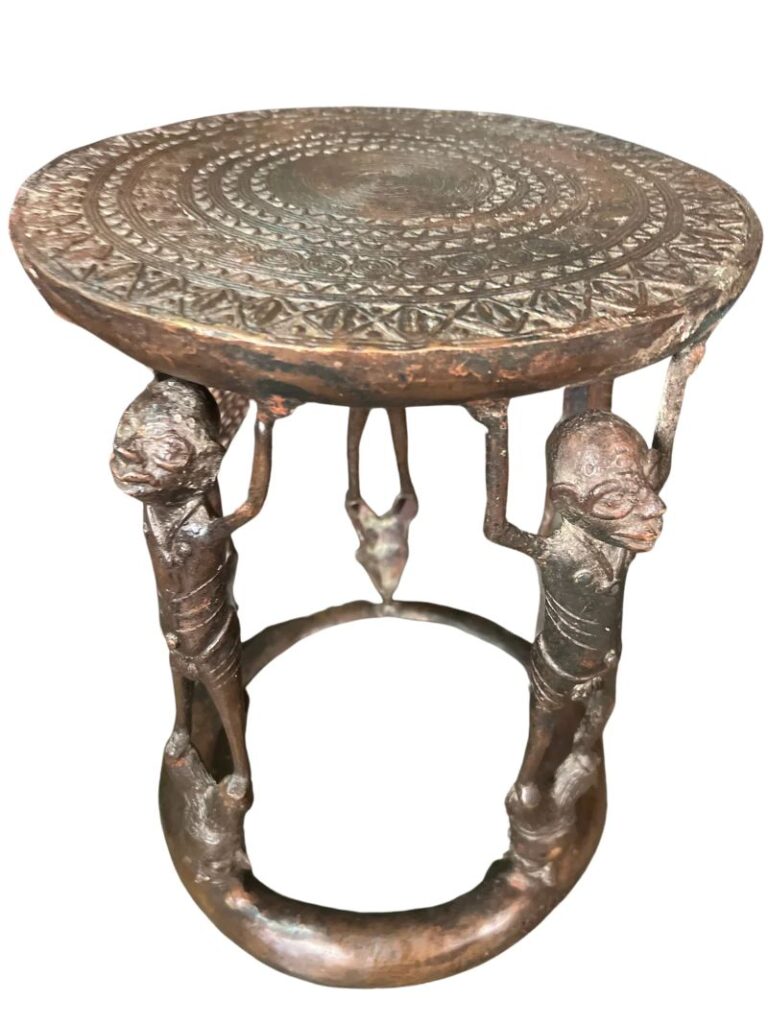
African Angel Art, $950
This isn’t just a stool—it’s a throne in disguise. Created by the Bamum people of Cameroon’s Grasslands, pieces like this were made for nobility and reserved for palace life. Cast in bronze, often adorned with animal figures, it’s loaded with symbolism. It looks striking beneath a console or standing solo near a window.
African bronze art belongs in the spotlight.
With roots deep in tradition and a timeless sculptural quality, these pieces hold their own in any space. Whether you’re drawn to the symbolism, the patina, or the craftsmanship, style them with intention, collect them with curiosity, and live with them like they matter—because they do.
You May Also Like: The Mighty Ashanti Stool | Make Your Home Fit for Royalty

